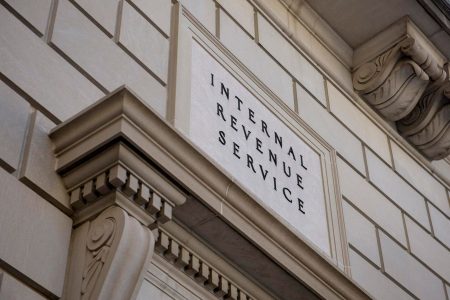The IRS is not backing down on efforts to stem the tide of what it believes to be erroneous or false claims related to the Employee Retention Claim (ERC). The agency has now announced it is opening a supplemental claim process to help third-party payers and their clients resolve incorrect ERC claims.
The Problem
Third-party payers, like payroll companies, report and pay clients’ federal employment taxes under the third-party payer’s Employer Identification Number (EIN). Some of these third-party payers also filed ERC claims for multiple employers. If a third-party payer’s client has since determined it is ineligible for the ERC and wants to resolve their claim, it is the third-party payer that needs to correct it.
You see where this is heading. Previously, it was unclear how a third-party payer who filed ERC claims for multiple employers could easily correct claims for some companies while allowing other claims to proceed. Now, the IRS has introduced a “supplemental claim process” that allows a third-party payer who filed a prior claim with multiple clients to withdraw claims for some clients while maintaining the claims of the qualifying clients.
The Solution
The supplemental claim process allows third parties to correct or consolidate previous claims that they filed on or before January 31, 2024, if the IRS has not yet processed those claims—the third-party payer should not include ERC amounts that were filed after January 31, 2024. Once the supplemental claim is filed, the IRS will not process those outstanding adjusted employment tax returns for the tax period and will treat claims filed before the supplemental claim as if they were never filed.
(And this isn’t an invitation to claim more credit. According to the IRS, the amount of ERC on the supplemental claim must be equal to or less than the cumulative amount of ERC claimed on the returns the third-party payer is replacing by filing the supplement claim.)
The deadline to submit a supplemental claim is November 22, 2024. There are no extensions.
“The supplemental claim program is a critical step to improve the IRS’s ability to process Employee Retention Credit claims for this more complex segment of taxpayers,” said IRS Commissioner Danny Werfel. “As we continue to accelerate and intensify our work in this area to help qualifying small businesses and protect against improper claims, we continue to explore and develop additional ways to speed our work on this incredibly detailed credit where the number of claims exploded following aggressive marketing.”
Eligibility
The supplemental claim process is for third-party payers meeting all of the criteria. To qualify, the third-party payer must have filed one or more claims aggregating Employee Retention Credits using the third-party payer’s EIN on an adjusted employment tax return (Forms 941-X, 943-X, 944-X, or CT-1X). Importantly, the IRS must not have processed any of the claims the third-party payer includes in the supplemental claim.
Other Options
The supplemental claim process does not apply to common law employers who did not use a third-party payer and instead filed adjusted employment tax returns using their own EIN. It also does not apply to third-party payers that received the full amount of ERC claimed on behalf of themselves and their clients as a refund or a credit against tax owed.
Third-party payers and employers who do not qualify for the supplemental claim process may have other options to resolve bad claims, including voluntary disclosure.
The IRS opened a second ERC voluntary disclosure program for businesses who want to pay back the money they received after filing ERC claims in error. This program only applies to tax periods in 2021—you can’t use this version of the voluntary disclosure program to repay ERC money from 2020. Specifically, the only employment tax returns taxpayers can resolve in the second version of the program are for tax periods ending March 31, 2021, June 30, 2021, September 30, 2021, and December 31, 2021.
If accepted into the new version of the program, you must repay 85% of the credit received. If you cannot repay the required 85% of the credit when signing your closing agreement, you may be considered for an installment agreement (that will happen on a case-by-case basis).
The IRS will not charge interest or penalties on any credits you repay promptly. However, if you can’t repay the credit when you sign your closing agreement, you must pay penalties and interest in connection with an alternative payment arrangement—including an installment agreement.
And as before, if the IRS paid interest on your ERC refund claim, you won’t need to repay that interest.
To apply, you must complete Form 15434, Application for Employee Retention Credit Voluntary Disclosure Program, available on IRS.gov. However, if you outsource your payroll to a third party who reports, collects, and pays employment taxes on your behalf using the third party’s EIN, the third-party payer must file Form 15434.
If you don’t qualify for the voluntary disclosure program but have submitted a questionable claim, you may want to consider a withdrawal. Under the withdrawal option, those who have filed an ERC claim but have not received a refund can withdraw their submission and avoid future repayment, interest, and penalties.
If you’re not sure which option is best for you, you can review the details of the voluntary disclosure program in IRS Announcement 2024-30 and check your eligibility for ERC on the IRS website.
ERC Relief
The ERC program was intended to assist eligible employers in keeping the lights on in their businesses. Eligible employers are those that paid qualified wages to some or all employees after March 12, 2020, and before January 1, 2022. Typically, to qualify, you must demonstrate that your business was shut down by a government order due to the pandemic during 2020 or the first three calendar quarters of 2021 or that you experienced a specific decline in gross receipts during the eligibility periods during 2020 or the first three calendar quarters of 2021. Some businesses may also qualify as recovery startup businesses for the third or fourth quarters of 2021.
The credit is 50% of up to $10,000 in wages, meaning it can be as high as $5,000 per employee in 2020 and as high as $21,000 per employee in 2021.
(The IRS created a checklist to help businesses or other organizations decide if they qualify for the ERC.)
More Information
The IRS is constantly updating its website to address questions related to ERC claims (some tax professionals have argued that it’s too little, too late). If you have questions about the supplemental claim process, you can check out the IRS FAQ page on the subject.
There is also an FAQ page for ERC eligibility, withdrawing an ERC claim, the ERC Voluntary Disclosure Program, recordkeeping and scams.
The penalties for submitting an incorrect ERC claim can be steep—and may also turn criminal, depending on the facts and circumstances. And, as noted, there is frustration around the claims and refund process. If you have questions, check with a trusted tax advisor to help you determine your next steps.
Read the full article here










